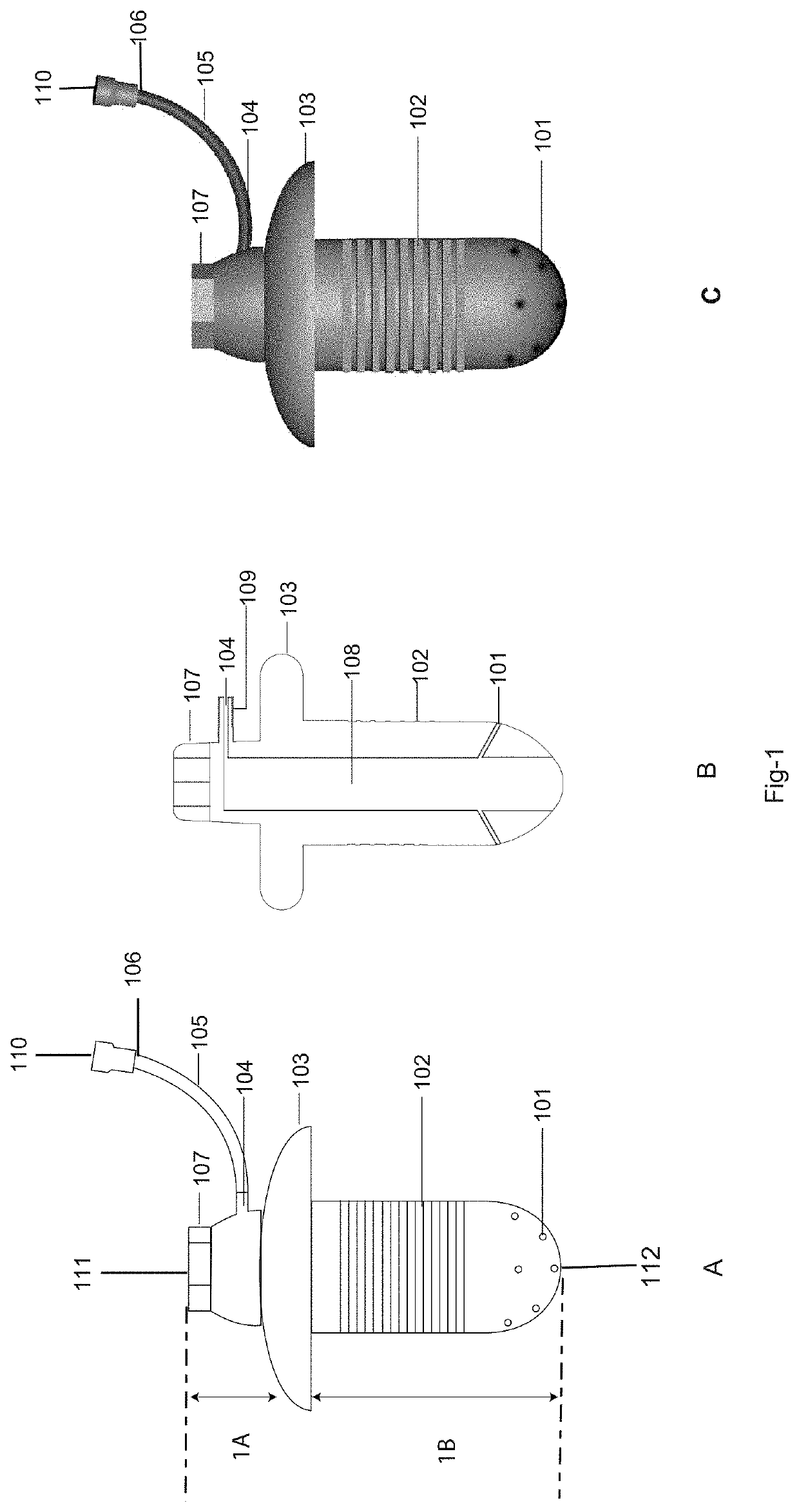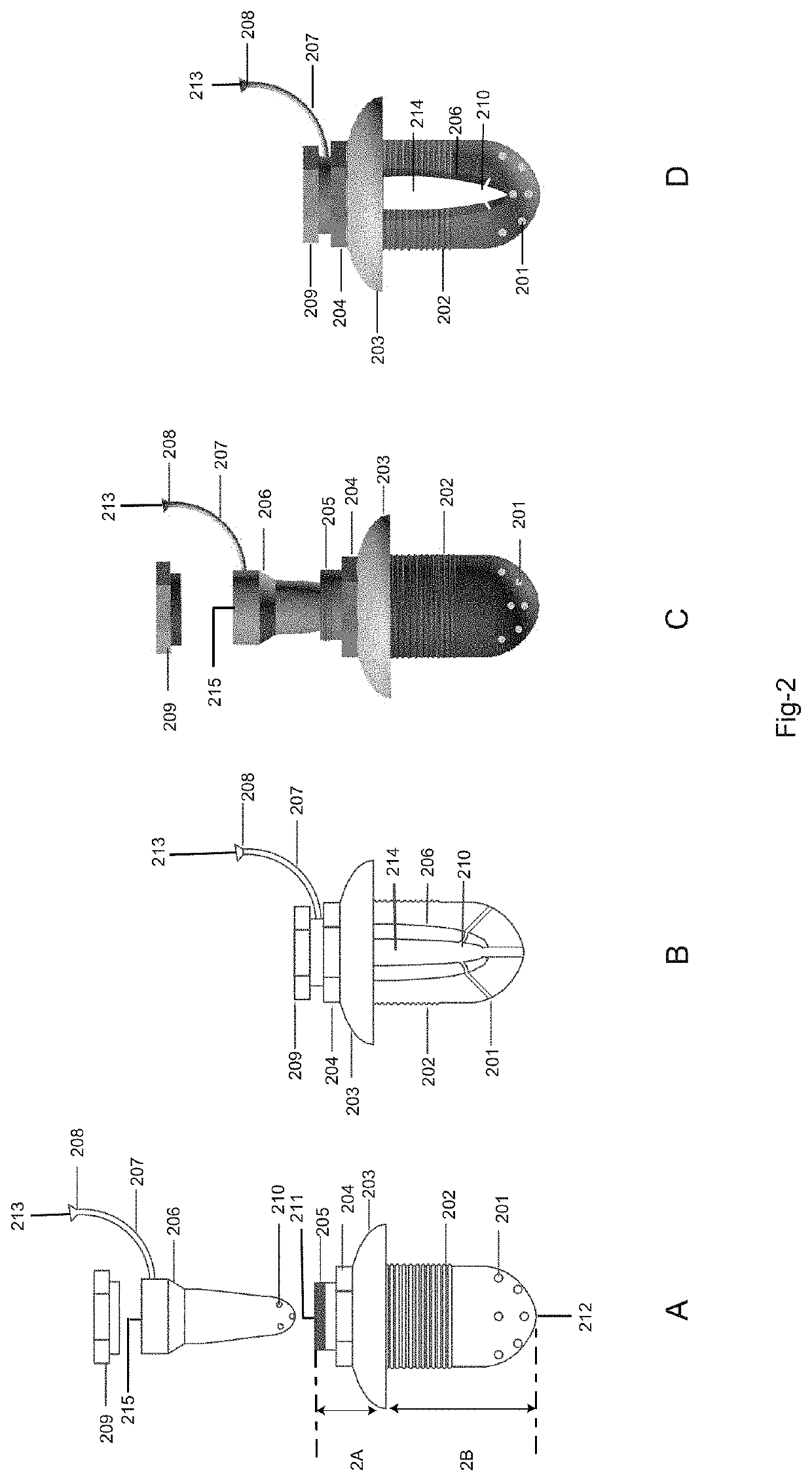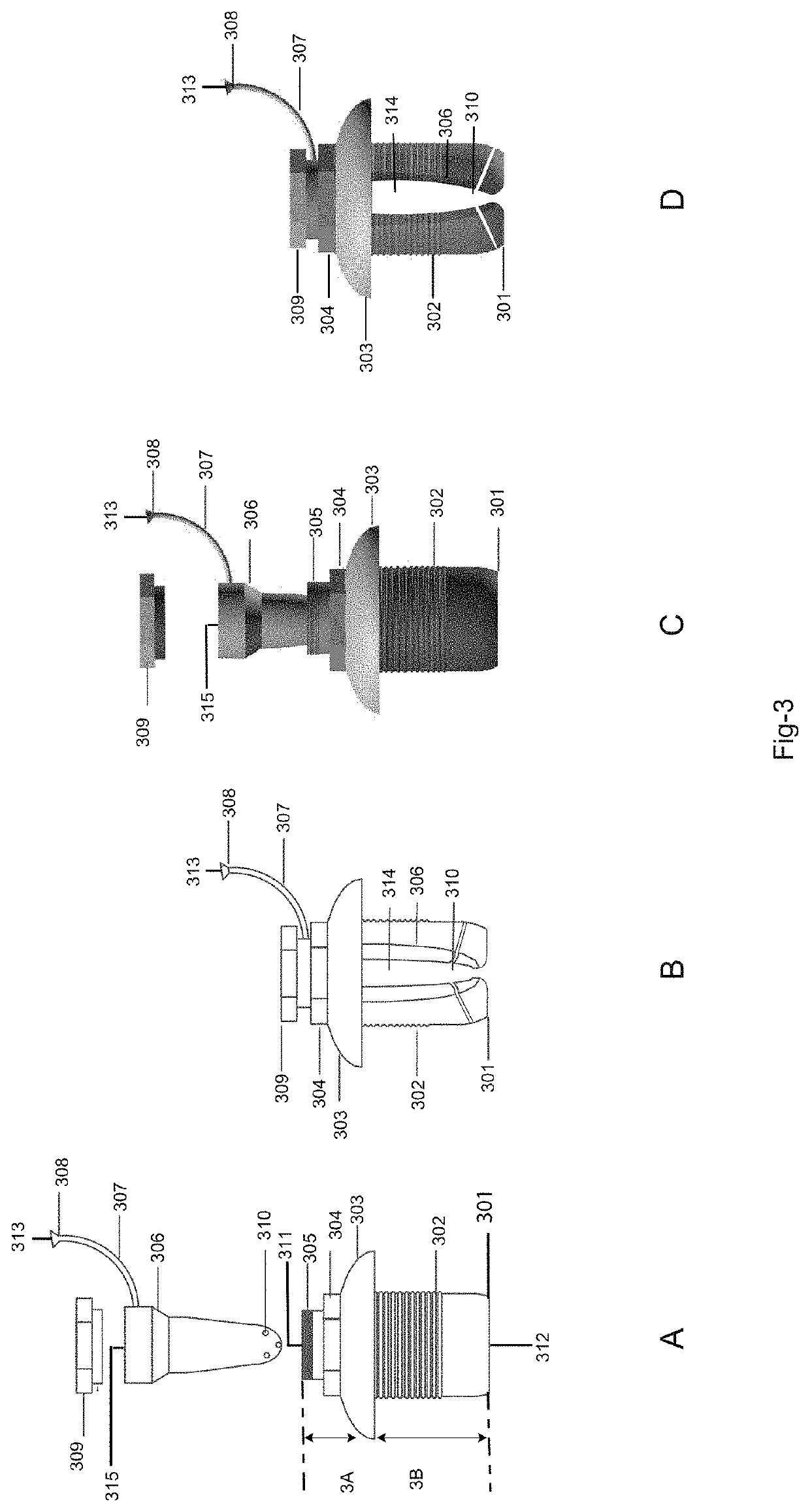Drug delivery system and method for controlled and continuous delivery of drugs into the brain by bypassing the blood brain barrier
a drug delivery system and brain barrier technology, applied in medical devices, dental implants, medical science, etc., can solve the problems of high failure rate when administered in humans, drugs are not able to enter, and it is not practicable to treat many medical conditions of the brain, so as to improve drug safety, increase drug retention time, and facilitate inhalation
- Summary
- Abstract
- Description
- Claims
- Application Information
AI Technical Summary
Benefits of technology
Problems solved by technology
Method used
Image
Examples
example 1
[0114]Controlled and Continuous Delivery of Drugs Beneath the Respiratory Mucosa
[0115]The device was surgically placed in a rabbit in the maxillary sinus region by removing the bone overlying the respiratory mucosa. The tip of the device was placed beneath the maxillary sinus lining mucosa in contact with the connective tissue side of the mucosa. Dopamine was infused in a controlled and continuous manner under the maxillary sinus mucosa of the rabbit for twenty minutes at the rate of 1 milliliter per hour by using an external drug infusion pump connected to the implanted device. Whole body perfusion was done using a peristaltic pump with warm physiological saline for 20 minutes at a controlled rate. The perfused brain was then resected at the end one hour from the start of the procedure. Brain samples from different parts of the brain was analyzed using High Performance Liquid Chromatography. There was an increased concentration of dopamine in all parts of the brain except diencepha...
example 2
[0116]Controlled and Continuous Delivery of Drugs Above the Respiratory Mucosa
[0117]The device was placed into the maxillary sinus of a rabbit by perforating the maxillary sinus mucosa from the connective tissue side and placing the implant tip into the sinus cavity and above the epithelial layer. Lignocaine was infused in a controlled and continuous manner for twenty minutes at the rate of 1.5 milliliter per hour by using an external drug infusion pump connected to the implanted device. Whole body perfusion was done using a peristaltic pump with warm physiological saline for 20 minutes at a controlled rate. The perfused brain was then resected at the end one hour from the start of the procedure. Brain samples from different parts of the brain was analyzed using High Performance Liquid Chromatography. There was an increased concentration of Lignocaine in some parts of the brain as shown in the FIG. 17. Thus the drug had bypassed the blood brain barrier. But the tissue distribution w...
PUM
| Property | Measurement | Unit |
|---|---|---|
| biocompatible | aaaaa | aaaaa |
| diameter | aaaaa | aaaaa |
| affinity | aaaaa | aaaaa |
Abstract
Description
Claims
Application Information
 Login to View More
Login to View More - R&D
- Intellectual Property
- Life Sciences
- Materials
- Tech Scout
- Unparalleled Data Quality
- Higher Quality Content
- 60% Fewer Hallucinations
Browse by: Latest US Patents, China's latest patents, Technical Efficacy Thesaurus, Application Domain, Technology Topic, Popular Technical Reports.
© 2025 PatSnap. All rights reserved.Legal|Privacy policy|Modern Slavery Act Transparency Statement|Sitemap|About US| Contact US: help@patsnap.com



